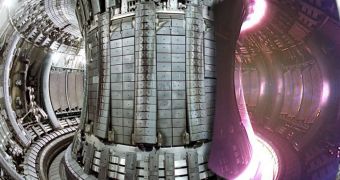There is only one word on everyone's lips today: energy. And how to produce it more efficiently, without polluting the planet. The International Thermonuclear Experimental Reactor, or ITER for short, has recently received a contribution of 1.4 billion dollars from the Republic of China, which covers about 10 percent of the total cost of the experimental nuclear fusion reactor.
Unlike traditional nuclear fission reactors that use radioactive materials, such as the uranium-235 isotope, in order to produce energy by splitting the uranium atom, nuclear fusion works by a principle which is somehow the reverse of the previous mentioned. Nuclear fusion fuses together lighter atoms, like hydrogen for example, process that is also followed by the release of a great amounts of energy.
The same thermonuclear reaction takes place in stars, as they burn molecular hydrogen into even heavier elements. Nuclear fusion reactors, however, will be able to produce energy without implying worries related to radioactive nuclear waste, which is resulted in the process of nuclear fission.
According to Luo Delong, the goal of the ITER project is to provide a prototype of a stable nuclear fusion reactor, which could solve part of the nowadays energy-related problems. The prototype is currently being built in Cadarache, France, and is scheduled to take 10 years, only for the construction part of the project.
Multiple nations and international organizations are currently involved in the project, amongst which are the European Union, the U.S., China, Russia and a few other countries. As the nuclear fusion reactor would primarily use hydrogen gas that can be found in abundance on Earth, engineers expect that it will be able to provide for an alternative energy source, producing limitless amounts of energy, efficiently and cleanly.
It is currently unknown if such a device will be functional, thus further tests need to be carried out. Currently, the biggest concern is related to the fact that the reactor will not be capable of creating enough energy to sustain the powerful magnetic field confining the nuclear fusion reaction, and to provide with additional power at the same time.

 14 DAY TRIAL //
14 DAY TRIAL //